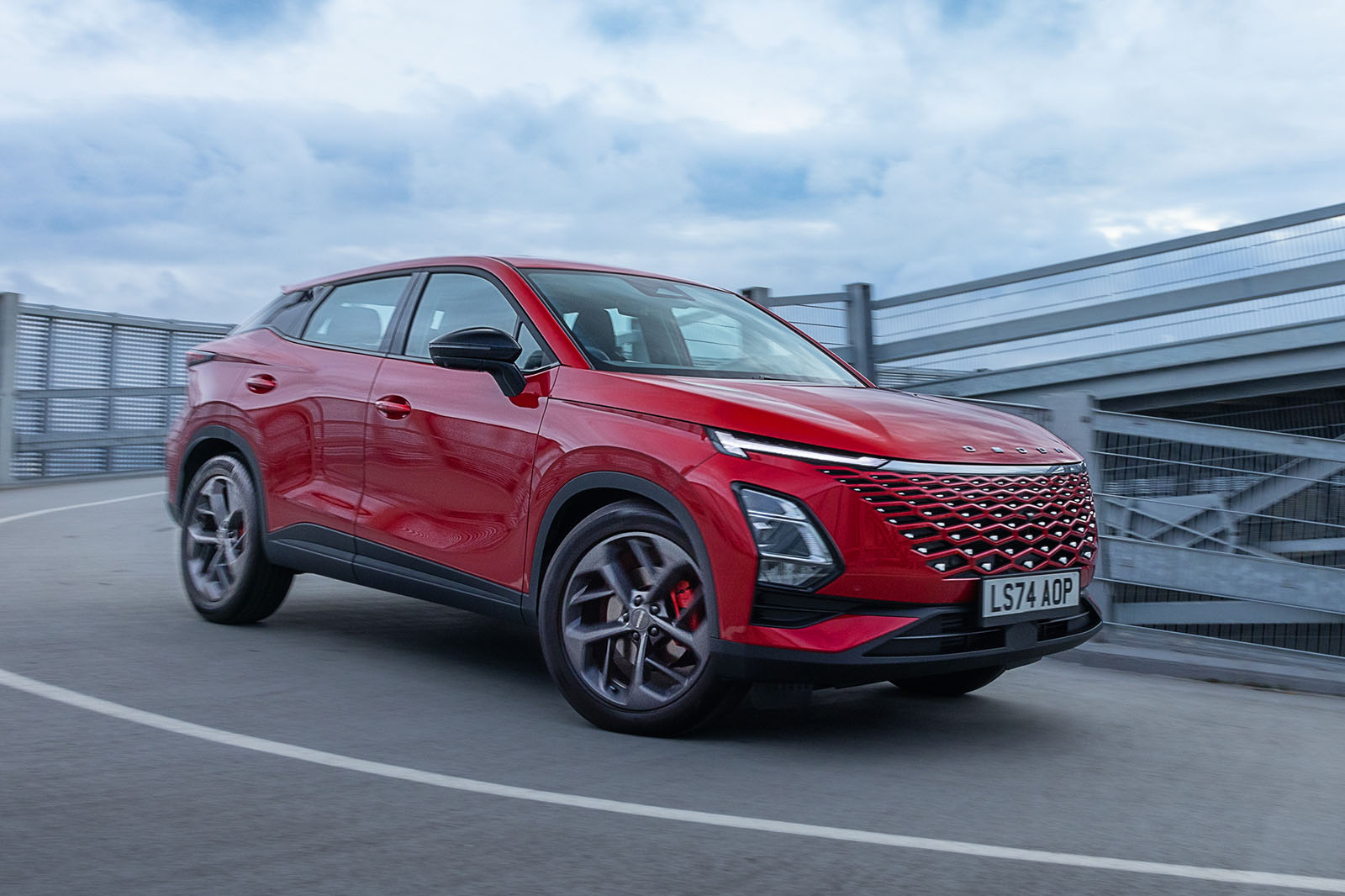You might expect the cabins of the 5 and the E5 to be identical, but the electric car’s interior is “half a generation” ahead, in the words of one Omoda exec.
The differences are small but they add up: the E5’s dash has softer trim, the transmission tunnel has a cleaner design, and there is smarter integration of things like window switches and speaker covers. Inside, the electric car feels quite a bit more plush, as well it might with prices starting not at £25k but £33k.
The essential layout is the same for both cars, however, and it is a reasonably successful one. The driving position is a touch high but there’s just enough adjustability in the steering column and the seats (electrically adjustable, no matter the trim level) themselves are more sculpted than you would typically find on a car at this price. You can get comfortable and on acquaintance the 5 feels grown-up for the money, especially with its side-by-side 10.3in displays, which perch atop the dash but aren’t at all intrusive, as is often the case. Full-width vents and a steering wheel squared off at its base are straight from the Audi playbook.
Underneath all the superficial slickness, this cabin is obviously built to a price, and you would expect nothing less. Every material, no matter how it appears, is made of plastic, and there’s play in some of the switchgear. Plastics outside of direct view are also often hard and unsculpted and feel very basic.
Oddment storage is fine, and the central cubby is deep and can be fed by the air-conditioning system, should you want to keep, for example, a sandwich in there. The sloped section of the centre console also cradles phones, and that’s useful if, for whatever reason, you don’t want to link up and use Apple CarPlay or Android Auto via the central display. The graphics and menus of the native system are fine but do feel a touch ‘aftermarket’.
Where the 5 struggles to be competitive is from the second row back. That rakish, sloping roofline comes at the expense of head room in the back (not to mention a very small rear window, inhibiting visibility). At 680mm, rear leg room is also short of what you would find in a Nissan Qashqai and even some smaller cars such as the Hyundai Kona. The shortfall isn’t too marked, but along with the way the side rails sit low, it creates a sense of tightness.
Boot space is also poor, at an official 380 litres – or 76 litres less than in the considerably smaller Ford Puma. A Qashqai offers 504 litres and an MG HS 463 litres. We suspect that Omoda’s figure doesn’t factor in the shallow cavity beneath the boot floor, but this is still a small space.
When taken with the constraints of the second row, it’s clear that the 5 isn’t particularly clever in packaging terms, given its near-4.5m of length to work with.

